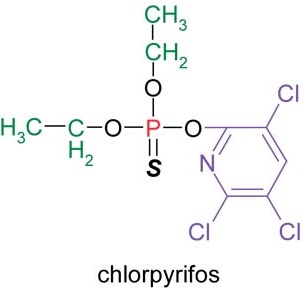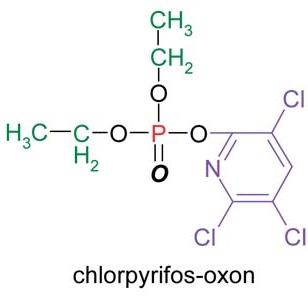In 1965, three years after the publication of Rachel Carson’s environmental classic, Silent Spring, the organophosphate pesticide Chlorpyrifos made its US debut. This pesticide and other organophosphates are chemical cousins of nerve gas—they are neurotoxic to insects and have side effects on humans and other animals. Chlorpyrifos is currently used on a range of Northwest staple crops, including apples, pears, and cherries, as well as sugar beets, lentils, and wheat. As Sightline reported in November 2015, the US Environmental Protection Agency (EPA) was preparing to cancel all uses on agricultural crops, but that decision will now fall to the Trump administration.
The dietary risk to the most sensitive group, children one to two years old, is 140 times higher than a level considered “safe” under the law.
President-elect Trump’s announced appointments indicate that his administration is likely to be much more accommodating to the petrochemical industry and much less protective of environmental and public health protections. Yet EPA’s formal risk assessment, revised and issued in November 2016, found dramatically higher risk estimates from food and water consumption.
EPA’s 2015 proposal resulted from a federal Appeals Court decision that ordered the Agency to make a decision on a 2007 request from Natural Resources Defense Council (NRDC) and Pesticide Action Network North America (PANNA), which had filed a petition to ban all uses of Chlorpyrifos. The same court subsequently directed EPA to issue a final rule on this pesticide by March 31, 2017.
In its November 2016 evaluation, EPA adjusted its earlier assessment to address evidence from epidemiology studies (including this one performed by Columbia University) indicating that prenatal Chlorpyrifos exposures can cause negative effects in children’s developing brains. With adjustments for such developmental effects, the revised assessment found much higher risks from consuming foods grown with Chlorpyrifos treatment. The dietary risk to the most sensitive group, children one to two years old, is 140 times higher than a level considered “safe” under the law. Other exposures that remain too high include from drinking water, where chlorination treatment generates the more acutely toxic Chlorpyrifos oxon metabolite.
EPA also identified unacceptable risks to bystanders, including farmworkers’ children, from breathing the Chlorpyrifos residues found in the air after pesticide applications and from direct exposures to workers. But in September 2016, even before EPA issued its latest proposal, a dozen groups, including the United Farm Workers and the National Hispanic Medical Association, petitioned EPA to cancel all uses of Chlorpyrifos in order to protect workers and their families.


Patti Goldman, Managing Attorney in the EarthJustice Northwest Office, represents PANNA and NRDC in their petition to EPA. Her recent post on Chlorpyrifos gives more details on the updated risk assessment and urges citizens to comment on EPA’s latest proposal.
Pesticide laws require EPA to analyze “aggregate” pesticide exposure to consumers, including from food and drinking water. For Chlorpyrifos, exposure from food consumption is too high all by itself. So are exposures from drinking water. EPA did not even attempt to combine these exposures and others, such as to farmworker children, because the scientific evidence of their harmfulness seems overwhelming. Accordingly, EPA reiterated its earlier proposal to cancel all uses of the pesticide on crops.
And the picture for chemical cousins of Chlorpyrifos gets even worse. EPA is also required to determine the cumulative risks from groups of pesticides that have a “common mode of toxicity.” In other words, the law requires them to examine the impacts of all organophosphates, which are neurotoxic. Yet EPA’s revised risk assessment and proposal on Chlorpyrifos deal with that chemical alone and leave unaddressed the implications for other organophosphates.
EPA last updated its cumulative assessment on organophosphates in 2006, finding then that overall exposures were acceptable. At that time, the Agency evaluated 50 organophosphates, but because of earlier regulatory actions, some had been completely cancelled. Still, 25 were used on food crops, and 8 had residential uses. But the law also requires EPA to review all registered pesticides every 15 years in light of new scientific and other information, and EPA began re-evaluating organophosphates in 2008.
The analysis is, admittedly, a time-consuming task, and the chemical industry can be expected to fight EPA regulatory proposals tooth-and-nail. But the science on Chlorpyrifos, along with court orders, caused EPA to address neurological development as a matter of concern in its analysis, and the Agency concluded that it cannot make the positive “finding of safety” required by pesticide law. The question now is: will EPA apply the same scientific methodology and regulatory approach that it used for Chlorpyrifos to its chemical cousins? And will it update its cumulative assessment accordingly?
Stay tuned for further developments under the Trump administration.
If you would like to submit comments on the EPA’s proposal you can do so here:
Submissions are due by January 17, 2017.
John Abbotts is a former Sightline research consultant who occasionally submits material that Sightline staff members turn into articles.


Comments are closed.